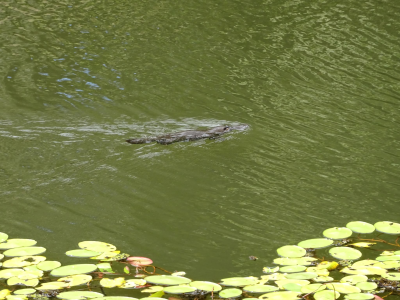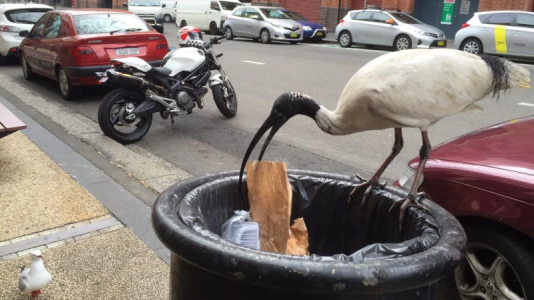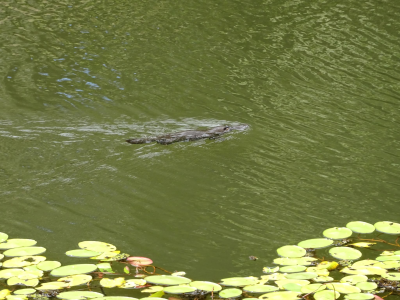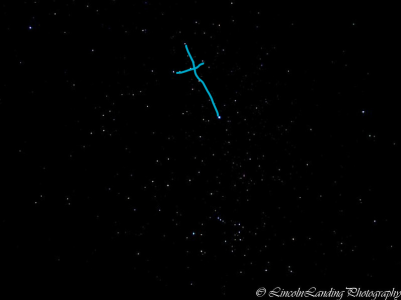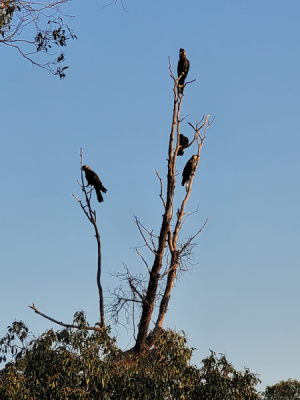zanzibar138
DIS Veteran
- Joined
- Jun 30, 2007
- Messages
- 6,150
Well, that was one thing about starting our US driving in a major city - there was no way I was ever going to accidentally cross to the wrong side of the road when there were multiple lanes of oncoming traffic!"Oh my God, Mom, stay on the LEFT!" "I'm TRYING!"
My main issue was in carparks, although I did also find myself turning onto the wrong side of the road a couple of times in small towns off Route 66.
"There's "ighs" in the fridge". Anara, doesn't miss a beat and asks (out loud!) "That sounds interesting, what are "ighs"? After a couple more tries we finally understood she was talking about EGGS! Buahahahahahaha!

Yeah, pelicans are pretty much everywhere.I stopped and stood amazed at this enormous Australian Pelican. Had I known I could see one within a few steps of our Airbnb, maybe I’d have saved the Pelican Lagoon stop the day before for this day.
(I tried not to scare him this much.Look closely)

I've always seen tide pools full of life in books and movies, but have never seen anything in them in real life. Maybe it's an Aussie thing?I was a bit surprised that the tide pools really didn’t have anything in them like starfish or even shells.
Haha I can tell you it eventually does wear offOn the way back I was treated to the incessant squawking of the resident flock of Galah (or Rose-breasted Cockatoo). These are ubiquitous in Australia, and we saw them in several of the places we visited; the novelty of such a lovely bird, despite the racket they make never wore off.
Phew!I was just getting the hang of driving again when we realized we’d forgotten to grab all of our food from the fridge for our meals for the next couple of days. UGH! Luckily, it only added about 30 minutes to our day and we didn’t arrive hours later that night hungry and totally out of luck.
You were expecting an explosion of insects?Anara found a termite hill to diddle around with. No, there was no explosion of insects as she’d hoped. Maybe that’s for the best.
A lot of campgrounds are being updated, but I can definitely tell you that they are not all like this. I've heard of communal bathrooms and camp kitchens with gas provided, but never for individual sites!The several we saw in various part of Australia included PROPANE (WTHeck?!) a sink with water (if the tank was full), a nice picnic table, a food prep counter that was COVERED (say, what?!), and a community shower/toilet. I can’t compare the prices because I failed to look at how much a site cost, but I can also tell you that there are TONS of FREE camping areas with many of the same amenities that we came across as well. Again, this is just an outsider’s perspective, but color me impressed!!
I'm not a camper, but my parents have done quite a lot in their caravan and I've never seen a camp setup like that! The one time I did go camping many years ago, the campsites were just small cleared areas, with 1 drop toilet for the entire campground.
Otherwise known as a bin chicken, or bin chook.

Maggies are beautiful, but not in Spring when it's swooping season (coming up soon for us!).
I use eucalyptus oil quite a bit, but have never really thought about how long it's been around and how they used to produce it.The abandoned equipment of the old still that extracted eucalyptus oil is here and apparently one of the best-preserved examples found in Australia today.
Yes, in most places you can pretty much camp wherever there's an access road. Unless there's a no camping sign.Especially since there are SO many places to just pull off the road and onto the beaches for free. (Correct me if I’m wrong on this one, @zanzibar138 but that’s the impression we got?)
That looks like an amazing campground - I'd even be tempted to camp there! Is that shelter just for one campsite? You'd usually find a slightly larger version of that with a few picnic tables for an entire campground.
You got some nice photos anyway.Today was a bust as it was just a salt flat devoid of any water whatsoever. Some reviewers gushed about its nice pink hue it gets when filled with rainwater, but today…. It was crusty and, while white, dry and kind of boring. We took a few goofy photos, I used the facili”trees”, and kept on going.
Very prettyBut there was still plenty of blooms making for a pretty scene.

A lavender latte? How interesting!It was still early enough in the day for a latte, and I was no less than thrilled to see they offered a lavender version.
Any respectable establishment in Australia will serve 'proper' cream with their scones. Whipped cream in a can isn't really a thing here. And we certainly do not have cheese in a can(Yes, that's homemade clotted cream, and yes, I also bought some coffee packets for emergencies)

Looks like a lovely place to enjoy.We headed outside to a shady table and chatted and giggled while the birds flitted about in the bottlebrush above us and amongst the rows of lavender all around us.
Haha I was going to guess that you saw emusHappy and full, we drove to Emu Bay proper. Here, we found, you guessed it, more black swans and more pelicans. (And here I thought they were a rare find.)

Is the glossy black cockatoo different to a regular black cockatoo? We see black cockatoos quite often in our area.I’d heard rumors that the EXTREMELY rare Glossy Black Cockatoo could be spotted in the Lashami Conservation Park if you’re really lucky.
That was a bad bushfire season Australia wide - lots of homes lost but luckily not too many lives.As you can see, just 4 short years earlier, 42% of the island was completely burned up. A huge part of the koala population was also killed. Many were rescued and moved to rehab facilities across the country. I was wondering if there’d be much beauty to see during our visit. I grew up in California and spent many years in Oregon where it can take decades for the land to recover after a fire. Delightfully, this ecosystem is a bit more resilient, and the amount of regrowth was quite astonishing! There was a ton of green and while, yes, there were plenty of reminders that fires had passed through, and the wildlife was making a wonderful comeback.
- 2019-2020: This fire season was one of the most challenging in the island's history, with almost half of the island's 440,500 hectares burning. The fires destroyed 87 houses, killed two people, and killed an estimated 32,000 head of livestock. They also damaged businesses, grazing land, forests, crops, machinery, and infrastructure.
The Australian bush actually relies on fires for regeneration. We have prescribed burns in a lot of more populated areas to burn in a more controlled way to reduce the combustible material and to regenerate the bushland. The government has started to work with the Aboriginal people to learn more about how to manage this in the best possible way.
The fires of Black Saturday in February 2018 were so bad that they razed entire towns and destroyed bushland. There's a town in the alpine region in Victoria called Marysville where they pretty much lost everything. For many years the bushland around there had been reduced to burnt out tree trunks, and took many years to recover. We lost a lot of lives in those fires too (human and animal)
 After that, there were a lot of changes put in place to try to protect towns and people. There are new building codes since then, a couple of extra levels of fire danger level, and much more focus on education and ensuring that people have proper fire plans.
After that, there were a lot of changes put in place to try to protect towns and people. There are new building codes since then, a couple of extra levels of fire danger level, and much more focus on education and ensuring that people have proper fire plans.Nice! Koalas can be hard to spot in the wild.Before we even got to the manned information kiosk, we got what we’d come to see!!! Two perfect Koala specimens hanging out in the trees right there in the parking lot. We’d hit the Motherlode 3 minutes after getting out of the car.
35? The last time I tried to post a photo update it cut me off at 10! Hopefully I can get to 35 next time, or it's going to take a REALLY long time to get through my upcoming WDW TR.Continued in next post (I hate the 35 photo limit)...
For most key areas of interest there will be a short accessible walk suitable for families with strollers and wheelchair users.I also wanted to mention at how incredibly impressed I was at the attempts Australia makes at building trails and walks that are accessible. They really do a bang up job at helping all-abled bodied folks enjoy the beauty that this beautiful place has to offer.
You have to be extremely lucky to see a platypus in the wild, and even when you do see them. I've only seen them once when we visited a specific platypus sanctuary. Like you, we stood in silence for half an hour or more before they showed themselves, and even then it was just for fleeting moments that were incredibly hard to photograph. This was the best I could manage.By this, we knew that the shy and not-often-seen, egg-laying mammal was there, but just not wanting to surface. My research shows that they can stay underwater for between 2 and 10 minutes, so I remained hopeful. Sadly, it/they? must have come up in places none of us were looking or couldn’t see.
